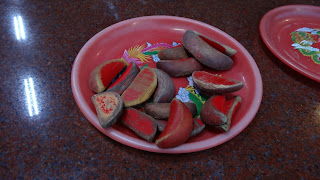This is a concept I knew nothing about until reading a book recently set in Singapore before and during the Second World War. Death houses are places where the dying are sent to spend their final days, because the Chinese believe that dying in the family home will bring bad luck. The death house would consist of a funeral parlor which would be on the ground floor with accommodation for the dying above. In Singapore the death houses thrived as many Chinese immigrants were unable to return to their birthplaces to pass away. Instead they, friends or relatives, paid for a stall within the death house to spend their final days. In Singapore the death houses were based in Sago Lane in Chinatown, so named after the Sago flour production that took place there during the 19th century. During the early 20th century the area became known for its prostitution and death houses, an interesting combination!
The whole concept of death became an industry in itself. In the past the Emperor of China was buried with his wives, servants and concubines because of the belief that they could serve him in the next world. The more modern tradition is to buy paper items, money, houses, cars, clothing, wine and other luxury items. Burning these items and other death rituals are all part of preparing the soul for its journey to the next world where the soul will be judged and possibly punished. If a person is dying slowly and painfully it is believed they are being punished for past sins.
Some families would also pay professional mourners, who would attend the funeral and cry. The staff in the death house soon became able to identify them as they were more vocal in their grief. Some staff working in the death house also lived there themselves, always surrounded by the moans of the sick and the burning of joss sticks and other offerings. During the 1960’s the local newspaper reports of a thriving death house industry in Singapore. At this time relatively large objects were made to accompany the dying to the next world. Although generally less elaborate, often nowadays miniature, these paper offerings can still be found round the corner from Sago Lane on Banda Street. Such a fascinating insight into the beliefs of the Chinese community in Singapore!














































